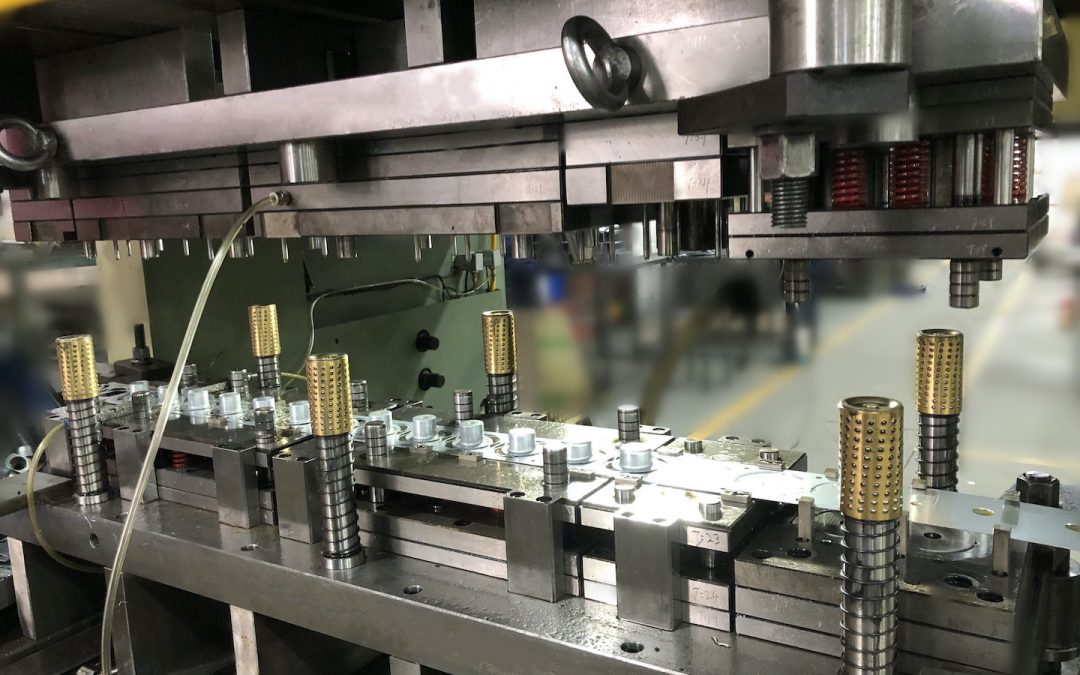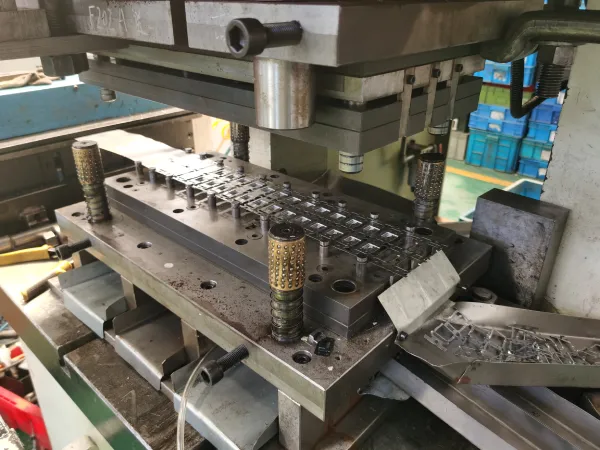Metal Stamping: Advancements Driving Market Development
Unlocking the Power of Steel Stamping: Methods for Enhanced Product Growth
In the realm of production, the use of metal stamping holds a significant location due to its versatility and effectiveness in producing complex parts and elements. The real possibility of metal stamping remains untapped by many companies looking for to enhance their product growth procedures. By discovering advanced techniques and techniques tailored to maximize style, material option, manufacturing efficiency, and quality assurance, companies can open a wealth of possibilities to elevate their items to new heights of development and performance.
Benefits of Steel Stamping
Metal marking deals a economical and reliable approach for creating high-grade steel parts. One of the vital advantages of steel stamping is its capacity to create intricate geometries with high accuracy and consistency.
Furthermore, metal stamping enables high-volume manufacturing, making it excellent for jobs that require big amounts of steel parts. The rate and repeatability of the stamping process not just make sure price financial savings but also add to faster turnaround times for manufacturing orders. Furthermore, the use of automatic equipment in steel stamping helps decrease the threat of human mistake, causing enhanced total item top quality.

Layout Optimization Strategies
With careful factor to consider of product properties and geometric setups, design optimization strategies play a critical function in improving the efficiency and functionality of metal stamping procedures. By purposefully analyzing aspects such as material stamina, density, and kind, manufacturers can customize the style to optimize the performance of the stamping operation. Making use of simulation software application, engineers can anticipate exactly how various design variations will act under different stamping problems, permitting the recognition of potential problems before manufacturing starts.
Moreover, incorporating functions like fillets, chamfers, and embosses right into the style can boost the general top quality of the stamped component while lowering the risk of problems such as fracturing or contorting. Additionally, optimizing the format of features on the part can boost the product circulation during marking, resulting in even more consistent and precise end results.
Basically, style optimization methods allow manufacturers to fine-tune their metal stamping procedures, bring about boosted product quality, boosted manufacturing performance, and ultimately, an extra affordable setting in the market.
Material Selection Strategies
Design optimization strategies in steel marking processes greatly count on strategic product choice methods to guarantee the desired performance and performance of the produced parts. The choice of material in steel stamping is important as it straight influences the quality, sturdiness, and general performance of the end product. When picking the appropriate material for a specific task, factors such as mechanical homes, deterioration, formability, and cost-effectiveness resistance have to be thought about.

Stabilizing the efficiency demands with the general expense of materials is essential to make certain the financial viability of the manufacturing process. By very carefully assessing these aspects, producers can enhance their product selection techniques to attain remarkable product top quality and functional effectiveness.
Enhancing Manufacturing Performance
Effectiveness in manufacturing processes is an essential variable original site for making certain cost-effectiveness and prompt distribution of premium metal marked parts. To improve production performance in metal marking, a number of strategies can be implemented. One crucial approach is optimizing the tooling design to minimize material waste and lower production time. By utilizing innovative simulation software application, suppliers can refine the tooling and examine style prior to actual production, thus improving the marking procedure and improving total performance.
Additionally, carrying out automation and robotics in metal marking procedures can significantly boost efficiency and uniformity while decreasing labor expenses. Automated systems can execute repetitive jobs with high accuracy and speed, causing boosted manufacturing effectiveness and higher result prices. Purchasing modern stamping equipment with advanced functions, such as servo-driven presses and quick die change systems, can better enhance production processes and reduce downtime.
Additionally, developing clear interaction channels and cultivating cooperation between production, layout, and engineering teams is important for recognizing potential bottlenecks and executing continuous renovations in the manufacturing blog operations - Metal Stamping. By embracing lean production principles and leveraging modern technology developments, manufacturers can unlock the full possibility of steel stamping processes and attain higher production efficiency
Quality Assurance and Assessment Techniques
To make sure the consistent production of premium metal stamped components, rigorous quality control and evaluation techniques play a crucial duty in verifying the precision and stability of the production process. Quality control in metal stamping involves a series of organized checks and steps to guarantee that each part meets the given needs. Assessment techniques such as visual evaluation, dimensional evaluation, and material testing are commonly employed to examine the top quality of stamped parts. Visual examinations make sure the surface area coating and integrity of the components, while dimensional evaluation confirms that the components conform to the needed specifications. Product testing strategies like hardness screening and material composition evaluation help confirm the product properties and architectural honesty of the stamped components. In addition, advanced modern technologies such as automated optical inspection systems and coordinate gauging makers are progressively being made use of to improve the accuracy and efficiency of quality assurance procedures in steel stamping. By applying durable quality assurance and assessment methods, suppliers can support high standards of quality and uniformity in their steel stamped products.
Conclusion
In conclusion, steel marking deals many benefits such as cost-effectiveness, precision, and versatility in product development. In general, unlocking the power of metal stamping calls for a calculated method to enhance product development procedures.
Steel marking deals a cost-effective and effective approach for producing high-grade metal elements.Moreover, metal stamping allows for high-volume manufacturing, making it optimal for tasks that require big amounts of steel components.With cautious factor to consider of material homes and geometric arrangements, layout optimization strategies play a crucial function in improving the efficiency and capability of steel marking procedures.Layout optimization techniques in metal marking processes greatly depend on calculated material option strategies to guarantee the desired efficiency and performance of the made parts. The selection of material in metal stamping is critical as this link it straight influences the top quality, sturdiness, and general performance of the last item.